Ertach Kernow - Cornish Churches Cool and Tranquil
Historic Cornish churches are often a good retreat during the peak of Cornwall’s summer season. Those wanting a bit of peace and quiet for an hour or so, with the added bonus especially this year with all the heat is that they are often cool. A couple I’ve visited this year are the parish churches of St Enoder not far from Newquay and St Julitta in the parish of Lanteglos by Camelford. Both churches are in very rural locations hence the peace and quiet found there with tranquil churchyards and interesting grave monuments to browse.
Although the first record of St Enoder was as Heglosenuder in the 1086 Domesday survey, archaeological evidence points to there being occupation here from at least the Bronze Age. During the building of the A30 bypass further Romano-British settlements were discovered along with an Iron Age round. Sadly, these were either destroyed or buried underneath concrete but at least they were recorded after being excavated. Although some sources tell of a bustling churchtown village at St Enoder there seems little evidence of this bar fragmentary foundations, with the parish as a whole consisting of widely dispersed collection of small villages and hamlets. Some of these would become important in their own right including Mitchell, which sent two MP’s to parliament and Summercourt with its historic medieval fair. Many of the hamlets have histories relating to ancient Cornish families some of whom are memorialised in the church.
The church, a Grade I listed building, was built on the site of an early Celtic medieval building which prior to the Norman Conquest was held by the monks at Bodmin. The foundations to this early building lie underneath the existing church, perhaps uncovered during restoration work and show that it was a small simple building probably of uncut stone with a thatched or turf roof. The earliest parts of the later medieval church date to the 14th century with 15th century additions, although the font is Norman. The church was apparently in a ruinous state in 1464 and repairs undertaken, the north aisle was probably built at that time or soon afterwards and a chantry chapel was built in 1500. Presumably the tower had been built at the earliest stages of church construction. Archaeology tells us through huge numbers of water snail shell being unearthed that there were a number of freshwater lakes in the area in ancient times. The 17th century Cornish historian William Hals wrote of the land ‘The parish of St Enodor is the flattest or levellest parish of lands in Cornwall, and by consequence the storehouse or preserver of moisture or water.’ The upshot of this is that in 1686 the tower sank on its foundations and fell, having to be rebuilt in 1711/1712. At the time there was also damage to the church and the date of rebuilding work 1686 together with the initials WSV is carved into the battlements.
The church underwent a restoration in 1869, which included some rebuilding. The rood screen does however include some of the 15th century carving and there are some surviving early bench ends. In the north aisle are the coat of arms of Charles II, which can often be seen in other Cornish churches. Following the 1660 restoration of the Stuart monarchy these plaques showed support for the Royalist cause during the English Civil War. There are quite a number of monuments from the 18th century as well as a fine 17th century slate memorial with words dedicated to one Dorothy Tanner dated 1634. Some fragments of medieval glass survive in the east window of the south aisle.
Outside the churchyard is nicely overgrown with wildflowers and grasses with many monuments to those ordinary working folk who could afford a memorial. These are mostly 19th century with a smattering of 18th century ones still surviving. As with many there are perhaps sad stories such as James Bullock a farmer from Little Trewhelah, who died in 1862 living to the age of 80. Although he lived to a good age his name heads a list of four children, maybe even five as the grass obscures a lower name, who predeceased him.
Further to the east of Cornwall lies the parish of Lantaglos by Camelford, mentioned in an earlier Ertach Kernow article, with its Grade I parish church of St Julitta. This is also a very rural area, with the church lying someway from the nearest major town of Camelford. Originally within the historic manor of Helstone it is the mother church for Camelford and nearby Advent. Within the church there is evidence of remains of an early Norman cruciform church with the aisle and tower later 13th and 14th century additions. Sir John Maclean to whom we are indebted for his descriptions from the mid-1870’s tells us that only the north walls are what remain of the Norman period. The embattled and pinnacled tower stands 70 feet high with five round headed loopholes lighting the stairs. In 1559 during the reign of Edward VI the tower housed three bells, these were recast in 1783 when three more were added, further recasting taking place in the 19th century and later. For those interested in Cornish church bells, Dove’s Guide for Church Bell Ringers provides a detailed description of the current bells, which they describe as unringable. However, the local church community have been busy with The Friends of Lanteglos Church raising £80,000 for the restoration of these bells by John Taylor’s Bell Foundry in Loughborough. They are now looking for bell ringers.
The church itself was in considerable decay by the mid-19th century and in 1870 walls built of poor stone were demolished and mostly rebuilt including the tower.
This following paragraph in the Voice newspaper is incorrect and relates to St Julitta's Church, St Juliot near Boscastle. Please see the erratum at the foot of the page**
This was supervised by a young architect from Dorset named Thomas Hardy, who also carried out some internal design work. He would later become famously known as an author and a poet. It was whilst staying at the Rectory he met and later married the rectors sister-in-law Emma Gifford. There is now a beautifully engraved glass window, presented to the church by the Thomas Hardy Society, marking the millennium and Hardy’s connection with the parish. It depicts in detailed Hardy’s journey to St. Juliot from Dorset, aspects of two poems his architect’s tools and writer’s desk
As with many churches there was substantial Victorian restoration, not all sympathetically carried out. Certainly, Charles Henderson the 20th century Cornish historian thought not and comments ‘The church has been meanly treated during the last century and its interior is disappointing’. Perhaps he was looking at it from an academic point of view. There are a number of memorials including slate headstones that have been reset in the floor; whether there are as many as those recorded by Sir John Maclene in the 1870’s would need some specific research but helps illustrate the importance of recording work carried out by earlier historians and antiquaries. St Julitta’s Church once had a font which was replaced around the 15th century with the existing larger one carved from Pentewan stone. The earlier font languished in the rectory garden as a plant pot, eventually rescued it found its way to the small church of St Conan at Washway near Wadebridge. Dated from Saxon times this is now considered to be the oldest font not just in Cornwall but England as well.
What St Julitta’s Church at Lanteglos has in plenty is space surrounding the church, the remnants of the 130 acres of glebe land, that once included the nearby holy well. This is a wonderful place to walk to find solitude and peace with wildflowers, trees and many interesting monuments to contemplate. One of these monuments is the Saxon inscribed stone just outside the church. Discovered by John T Blight in 1858 propping up the wall of a barn it was purchased by Rev Wilkerson of St Julitte for the rectory garden. Fortunately, the Reverend Roe transferred it to the churchyard in 1907. The inscription reads ‘AELSELTH AND GENERETH WROHTE THYSNE SYBSTEL FOR AELWYNEYS SAUL AND FOR HEYSEL’ Meaning Aelseth and Genereth wrought this pillar for Aelwyney’s soul and for themselves.
Something that perhaps most people don’t notice on many of our Cornish churches are sundial usually above the porch door; not all our churches have them but quite a number do. These obviously face south, and the porch is often the best position to place a sundial to be observed by those using it and standing out from the church better to catch the sun. Both St Enoder and St Julitta have sundials above their respective porches. St Enoder’s is dated 1766 made by Nancarrow, restored in 1937 and has an engraved motto Time Tryeth Troth. These days meaning perhaps time tests loyalty. St Julitta’s sundial is earlier dated 1712 and has no makers or motto inscriptions. Something perhaps to look for when one next visits one of our historic Cornish churches, but please don’t set your watch by them.
**Erratum: Mention of Thomas Hardy in the Voice newspaper article has been corrected here as his connection is with St Julitta's Church, St Juliot near Boscastle not Lanteglos by Camelford. For this information we thank Chris Hayne who is Deputy Project Director and Finance Director since 2016 following the establishment of a Friends of Lanteglos Church group. Raising a huge sum of money to maintain this valuable historic church has been a herculean task by the group and more information can be found on the website at Lanteglos-by-Camelford Church.
Please support our historic Cornish churches to help maintain them and keep them open for all to enjoy. A donation when visiting or purchase of one of their items, which are often for sale within the church is always welcome and appreciated.
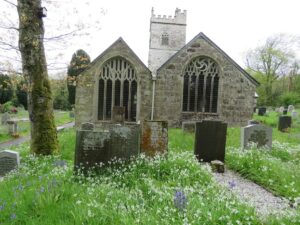
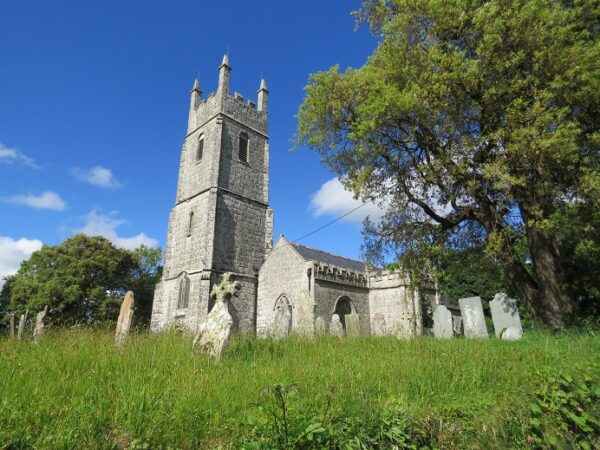
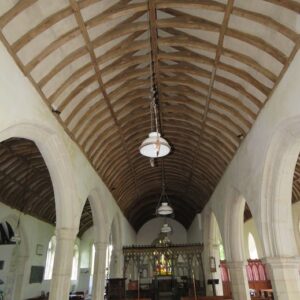
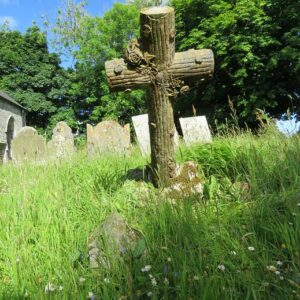
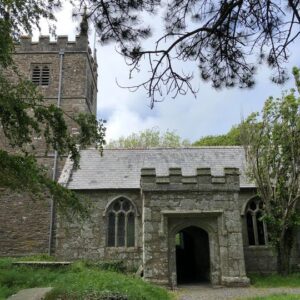
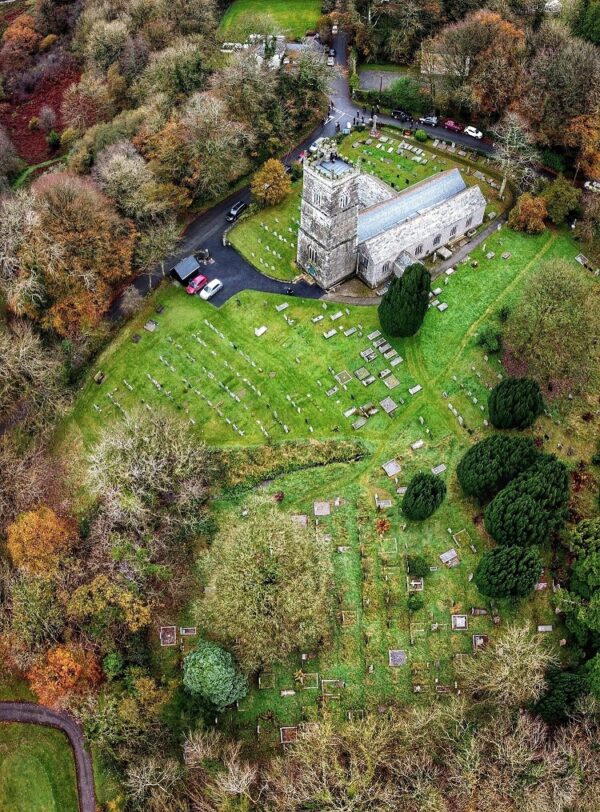
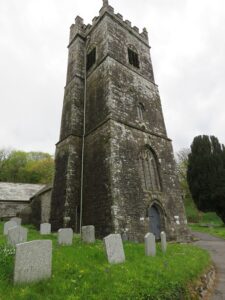
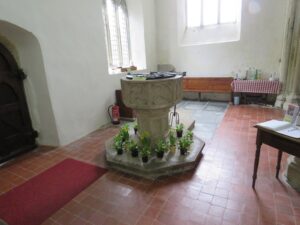
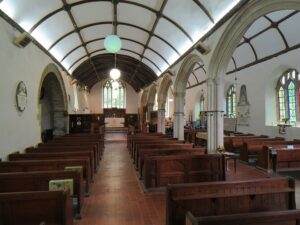
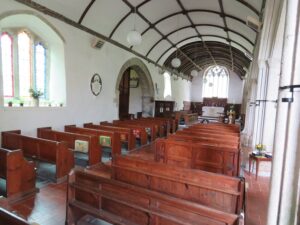
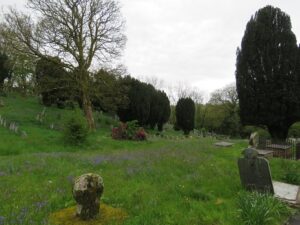
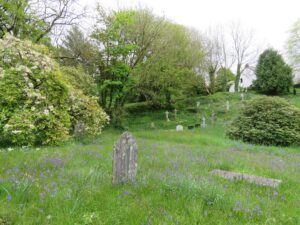
![St Julitta Churchyard grounds [2] St Julitta Churchyard grounds](https://www.cornwallheritage.com/wp-content/uploads/2022/08/St-Julitta-Churchyard-grounds-2-300x300.jpg)
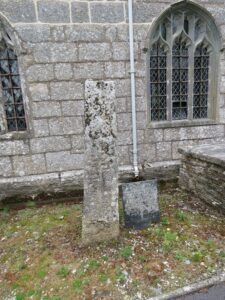
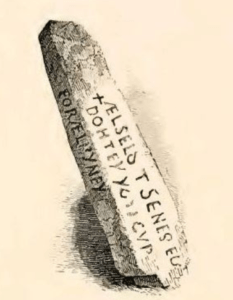
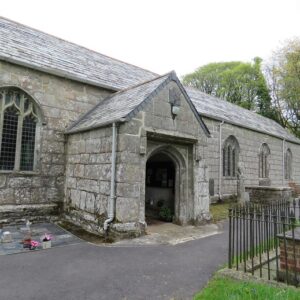
![[112] Voice - Ertach Kernow- 170822A Cool and Tranquil [S] Ertach Kernow - Cool and Tranquil](https://www.cornwallheritage.com/wp-content/uploads/2022/08/112-Voice-Ertach-Kernow-170822A-Cool-and-Tranquil-S-245x300.jpg)
![[112] Voice - Ertach Kernow- 170822B Cool and Tranquil [S] Ertach Kernow - Cool and Tranquil](https://www.cornwallheritage.com/wp-content/uploads/2022/08/112-Voice-Ertach-Kernow-170822B-Cool-and-Tranquil-S-238x300.jpg)
![[112] Ertach Kernow Heritage Column - 17th August 2022 - Supporting Cornwall's Lifeboats Ertach Kernow Heritage Column - 17th August 2022 - Supporting Cornwall's Lifeboats](https://www.cornwallheritage.com/wp-content/uploads/2022/08/112-Ertach-Kernow-Heritage-Column-17th-August-2022-Supporting-Cornwalls-Lifeboats-300x295.png)